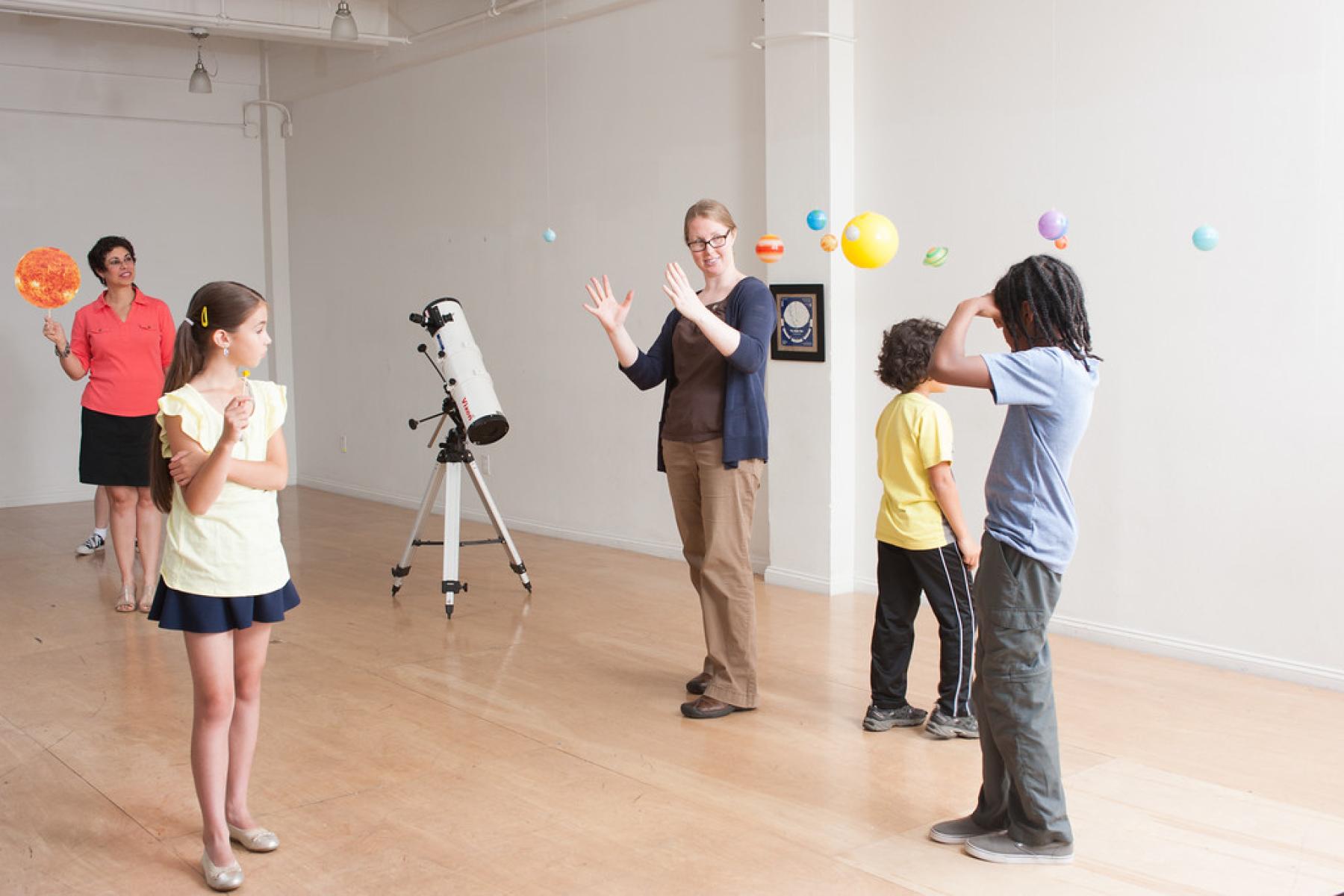DESCRIPTION
"Exploring the Solar System: Big Sun, Small Moon" is a hands-on activity that explores the concept of apparent size and allows visitors to experience these phenomena using familiar objects—a tennis ball and a beach ball. Participants learn that the Sun and Moon appear the same size in our sky because although the Sun is much bigger than the Moon, it is also much farther away.
DESCRIPTION
"Exploring the Solar System: Big Sun, Small Moon" is a hands-on activity that explores the concept of apparent size and allows visitors to experience these phenomena using familiar objects—a tennis ball and a beach ball. Participants learn that the Sun and Moon appear the same size in our sky because although the Sun is much bigger than the Moon, it is also much farther away.
TRAINING VIDEOS
OBJECTIVES
BIG IDEA
A solar eclipse occurs when the Moon blocks the light of the Sun from hitting Earth. The Sun is much larger than the Moon, but because the Sun is so much farther away, the Moon is able to fully block it during an eclipse.
LEARNING GOALS
We can see a solar eclipse from Earth because the Sun and Moon appear to be the same size in the sky.
The further away an object is, the smaller it appears.
NASA researchers learn new things by studying the Sun during a total solar eclipse.
DOWNLOAD FILES
- Exploring the Solar System: Big Sun, Small Moon activity guide (PDF)
- Exploring the Solar System: Big Sun, Small Moon facilitator guide (PDF)
- Exploring the Solar System: Big Sun, Small Moon table sign (PDF)
- Solar Eclipse postcard 2017(PDF)
- Solar Eclipse poster 2017 (PDF)
- Exploring the Solar System: Big Sun, Small Moon activity guide (Spanish) (PDF)
- Exploring the Solar System: Big Sun, Small Moon table sign (Spanish) (PDF)
- Solar Eclipse 2017 (Spanish) (PDF)
- Solar Eclipse poster 2017 (Spanish) (PDF)
Credits
The Science Museum of Minnesota
This material is based upon work supported by NASA under cooperative agreement award number NNX16AC67A. Any opinions, findings, and conclusions or recommendations expressed in this material are those of the author(s) and do not necessarily reflect the view of the National Aeronautics and Space Administration (NASA).
Creative Commons Attribution Non-Commercial Share Alike 3.0 United States (CC BY-NC-SA 3.0 US).
View more details

NISE Network products are developed through an iterative collaborative process that includes scientific review, peer review, and visitor evaluation in accordance with an inclusive audiences approach. Products are designed to be easily edited and adapted for different audiences under a Creative Commons Attribution Non-Commercial Share Alike license. To learn more, visit our Development Process page.






